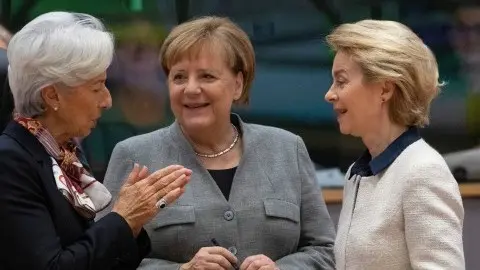Spain: Weaker growth ahead
Economic activity remained elevated in 2019, but there are reasons to think it will slow in 2020. A weaker domestic labour market and a weaker global environment will slow activity. Political uncertainty is likely to ease somewhat but overall will remain high
A good growth performance in 2019
Compared to the eurozone as a whole, Spanish economic growth held up nicely in 2019. During the first three-quarters of 2019 average quarterly growth equalled 0.46%, while this was 0.51% over the same period in 2018. Investment growth slowed over the course of the year, while export growth accelerated. Household and government consumption growth remained relatively stable.
The performance of the manufacturing sector was quite good, given the global environment. Compared to a year ago, manufacturing production was flat in Spain, but decreased by about 2% in the eurozone and by a whopping 6% in Germany.
Even though growth performance in 2019 was relatively good, labour market developments were not. The unemployment rate stopped declining at the beginning of 2019 and it now hovers around 14%, which is a lot higher than the 8% before the financial crisis. Similarly, employment growth slowed, while the employment rate stagnated at around 69%, which is still significantly lower than 76% observed before the crisis. All this might point to a severe case of hysteresis in the Spanish labour market.
Compared to the eurozone, Spain’s manufacturing sector performed well in 2019
Weaker growth in 2020
The weaker labour market did not yet have a strong impact on consumption, but consumer confidence started to drop during the summer months and is now at its lowest level since January 2015. In our view this lower consumer confidence will negatively impact consumption in the months ahead. Intentions to make major purchases by consumers over the next 12 months dropped already quite a bit.
It is not likely that the unemployment rate starts to drop significantly again as hiring intentions in the industry dropped in recent months. Furthermore, the manufacturing sector will probably weaken further in 2020. Industrial production expectation fell recently which will impact labour demand negatively.
Slower consumption growth is not the only reason why we expect slower growth in 2020. The weaker external environment is another one. Growth in the eurozone and the United States is forecasted to slow further in 2020, which will negatively impact Spanish export growth. It is also likely that the tensions and uncertainty surrounding international trade are not going to disappear soon. The threat of tariffs by the US on cars, which is the largest Spanish export sector, hasn’t materialized yet, but has not completely disappeared.
The unemployment and employment rate plateaued

Will political uncertainty recede in 2020?
Political uncertainty has been elevated during the last couple of years and 2019 was no different. Hence, the snap elections in April and November.
The November elections weakened the PSOE and Podemos, compared to the elections in April, but one day after the November elections they made the decision to form a minority government. To have enough support in parliament, they are now trying to convince the ERC (Catalan Republican Left) to abstain during the vote in parliament so the coalition government could be formed. However, ERC only wants to help the minority government if it gets some concessions in return, something which is still difficult.
This option is certainly not a done deal. Moreover, there are other possibilities. Recently, Inés Arrimadas, the new leader of Ciudadanos, said she is willing to work on a PSOE-Partido Popular-Ciudadanos government, although this looks to be a long shot.
However, we do think that pressure to form a government is high and this increases the likelihood that there will be a government soon as the main political parties are unlikely to fare any better in new elections. Once there is a government, political uncertainty should in principle decline however the type of government will also have an impact. A minority government is by definition not that stable and the political fragmentation and polarisation has only increased during the latest elections and this political reality won't be changing anytime soon.
Political uncertainty could hamper investment and hiring decisions, but it also impacts fiscal policy. As the Spanish government debt level is above 60% of GDP, the government should lower it at a fast pace. The no policy change draft budget submitted by the current caretaker government to the European Commission, however, did not go far enough.
According to the European Commission, Spain should use the decline of interest rate expenditures to reduce the debt ratio and urged Spain to submit a new budget consistent with the rules as soon a new government is formed. This warning, of course, makes the government formation more difficult.
We think that growth will slow in 2020 and expect a GDP growth rate of 1.4% in 2020. For 2021, we expect a growth rate of 1.5% compared to 2% in 2019.
The Spanish economy in a nutshell (%YoY)
This publication has been prepared by ING solely for information purposes irrespective of a particular user's means, financial situation or investment objectives. The information does not constitute investment recommendation, and nor is it investment, legal or tax advice or an offer or solicitation to purchase or sell any financial instrument. Read more
Download
Download article
16 December 2019
ING’s Eurozone Quarterly: Is this recovery for real? This bundle contains 13 Articles